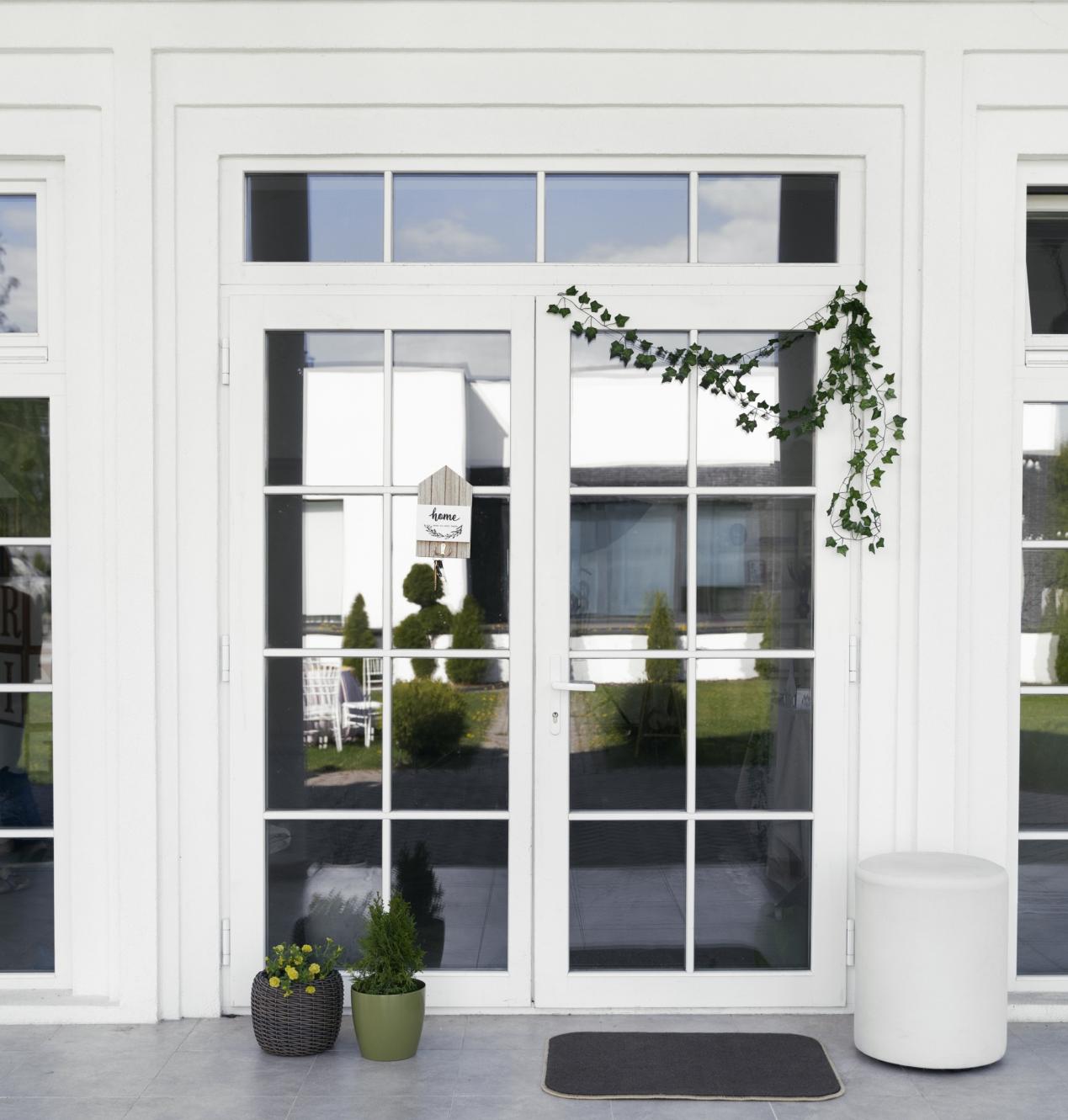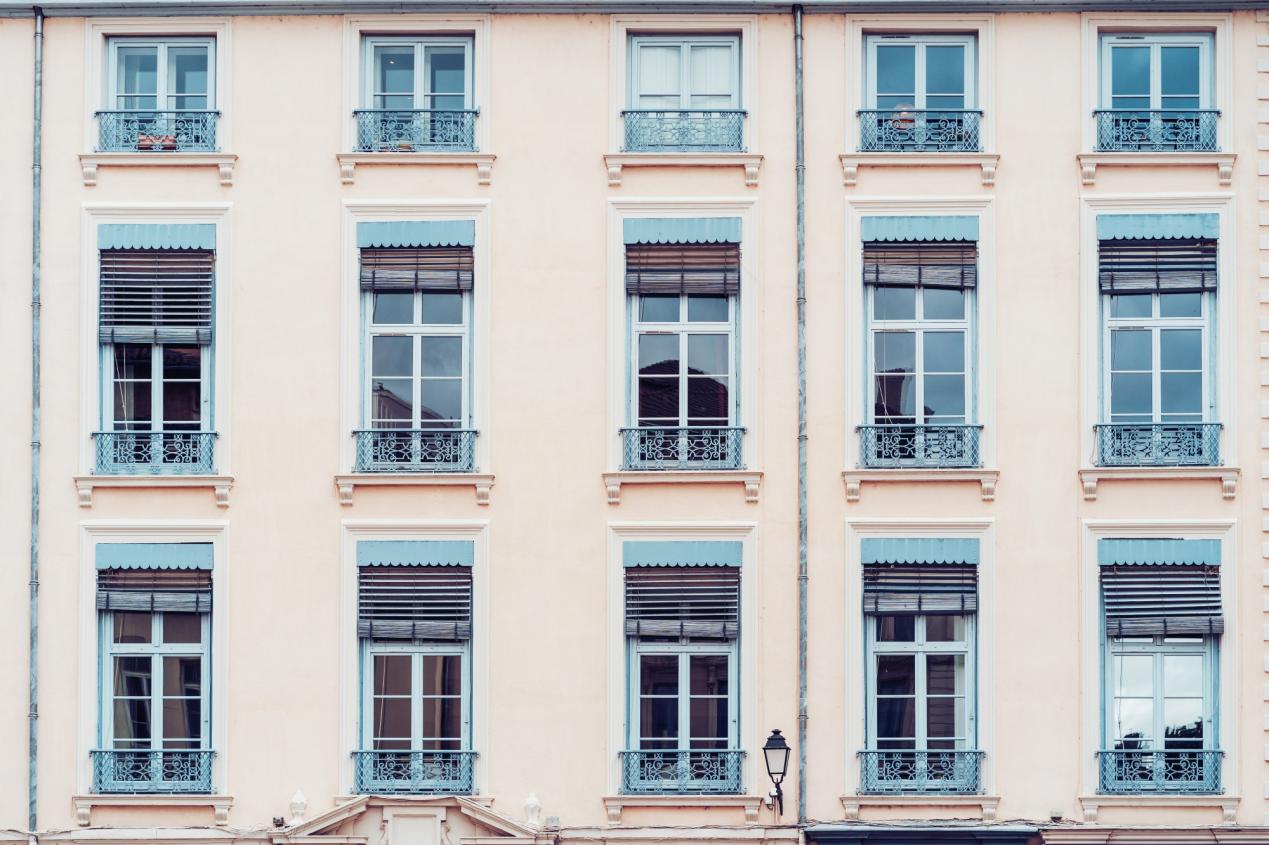French doors and windows, with their timeless design and inherent charm, have become a beloved feature in modern architecture. Characterized by their elegant symmetry and ability to flood interiors with natural light, they seamlessly blend indoor and outdoor spaces.
Then, what are French doors and windows exactly, what benefits do they offer, and are they ideal for your build? In this article, HOMI will provide you with clear and comprehensive information about these architectural elements, exploring their history, features, advantages, and how they compare to other door and window styles!
Picture from
https://www.freepik.com/free-photo/decorated-front-door-with-plant_49654591.htm#fromView=search&page=1&position=3&uuid=9a64982e-5333-4087-8cec-ecb94c7060e6&query=French+doors
Table of Contents
ToggleWhat Are French Doors and Windows?
At their core, French doors and windows are multi-pane designs, typically featuring glass panes set within elegant frames. This design allows for expansive views and a generous influx of natural light.
1. Historical Background and Origin
French doors and windows trace their roots to the Renaissance period in Europe, particularly in the 17th century.
Their design was inspired by Italian Renaissance architecture, which prized symmetry, proportion, and the maximization of natural light. French architects adapted these ideas, creating tall, window-like doors with multiple glass panes.
These features allowed light to flood into interiors and provided elegant access to balconies, gardens, and verandas. The term “French doors” became popular because these designs were widely adopted and refined in France before spreading across Europe and beyond.
2. Defining Features
French doors usually consist of a pair of doors with glass panes covering most of their length, often set within wooden, aluminum, or uPVC frames.
French windows, known in France as portes-fenêtres (“windowed doors”), are similar in form and function—tall, double casement windows that can open wide, sometimes even serving as doors themselves.
Both French doors and windows are characterized by their symmetrical appearance, divided glass panes (sometimes called “lites”), and the ability to open fully, creating a large, unobstructed opening between spaces.
Picture from
https://www.freepik.com/free-photo/vintage-building-facade-wal_7303077.htm#fromView=search&page=1&position=0&uuid=da53b0e2-a83e-43f4-b21d-b45766a3dcc0&query=French+windows
Types of French Doors
1. Interior French Doors:
These doors are used to separate interior spaces while maintaining an open and airy feel. They can enhance the flow between rooms, allowing light to travel through while still offering the option of privacy when closed. Often used between living rooms and dining rooms or hallways and studies, they add a touch of elegance to interior design.
2. Exterior French Doors:
Designed for exterior walls, these doors typically lead to patios, decks, balconies, or gardens. They are built with robust materials and enhanced weatherproofing to withstand the elements while providing a seamless transition between indoor and outdoor living.
3. Sliding French Doors:
As a variation of the traditional swinging design, sliding French doors feature two or more glass panels that slide horizontally past each other. This type is ideal for spaces where swing space is limited, offering the same aesthetic appeal and light-enhancing benefits in a more space-efficient format.
Benefits of French Doors
1. Aesthetic Appeal and Architectural Elegance
French doors and windows are renowned for their timeless beauty and sophistication. Their symmetrical design and expansive glass create a sense of grandeur and openness, complementing various architectural styles, from traditional to contemporary.
2. Natural Light and Ventilation
The generous glass panels in French doors and windows allow for optimal natural light penetration. When closed, they create brighter, more inviting interiors. When opened, they provide excellent ventilation and a strong visual and physical connection between the indoor and outdoor spaces.
3. Space Utilization and Room Transitions
French doors facilitate smooth transitions between rooms or between indoor and outdoor areas. Their wide openings make spaces feel larger and more open, ideal for entertaining or simply enjoying an unobstructed view.
4. Energy Efficiency and Insulation
Modern French doors and windows are often constructed with advanced materials such as insulated glass and thermally broken aluminum frames. These enhancements improve energy efficiency, reduce heat loss, and help maintain comfortable indoor temperatures. In addition, quality glazing and sealing options further boost insulation properties!
5. Security Features and Advancements
Contemporary French doors incorporate robust security features. These include multi-point locking systems that secure the door firmly along the frame and reinforced frames made from durable materials like steel or aluminum. These advancements help French doors remain secure and resistant to forced entry.
French Doors vs. Other Door Types
Selecting the right door involves considering various factors, including space, functionality, and aesthetic preferences. Here is a comparison of French doors with other popular door designs:
1. French Doors vs. Casement Doors
Casement doors are hinged on one side and swing open like a regular door, often featuring a single large glass pane. While casement doors can offer good ventilation when fully opened, French doors provide a wider opening and a more symmetrical aesthetic.
2. French Doors vs. Sliding Doors
Sliding doors involve one or more glass panels that can be pushed to one side horizontally. They are space-saving as they don’t require swing space. However, the opening created by a sliding door is typically only half the width of the frame. French doors, when both panels are open, offer a much wider and more inviting opening.
3. French Doors vs. Bi-fold Doors
Bi-fold doors are made up of multiple hinged panels that can fold back on themselves when opened, creating a very wide opening. While they maximize the opening, their folded panels can sometimes obstruct the view. French doors offer a cleaner, more traditional aesthetic and unobstructed views when closed.
Below is a clear table for you to compare French doors with other door designs:
Feature | French Doors | Casement Doors | Sliding Doors | Bi-fold Doors |
Opening Style | Hinged, open in/out, double panels | Hinged, usually single panel, side opening | Slide horizontally on a track | Multiple panels fold and stack |
Natural Light | Excellent | Good | Excellent | Excellent |
Space Usage | Requires swing clearance | Requires swing clearance | Minimal space needed | Panels stack to side, saves space |
Ventilation | Wide opening, great airflow | Good airflow | Partial opening | Wide opening possible |
Aesthetic Appeal | Classic, elegant | Sleek, modern | Modern, minimalist | Modern, versatile |
Security | High with modern locks | High | High with proper locks | High with modern systems |
Energy Efficiency | High with modern glazing | Very high | High | High |
Conclusion
French doors and windows are design elements that exemplify architectural elegance, offering unmatched natural light, seamless transitions, and enduring style. The versatility of modern French windows and doors makes them ideal for both interior and exterior applications.
HOMI specializes in manufacturing high-quality aluminum windows and doors of innovative designs. If you are seeking reliable aluminum building solutions, HOMI can offer you a wide range of options and provide you with professional custom solutions.
Click here to contact HOMI today! Let us cooperate together to elevate your project!



